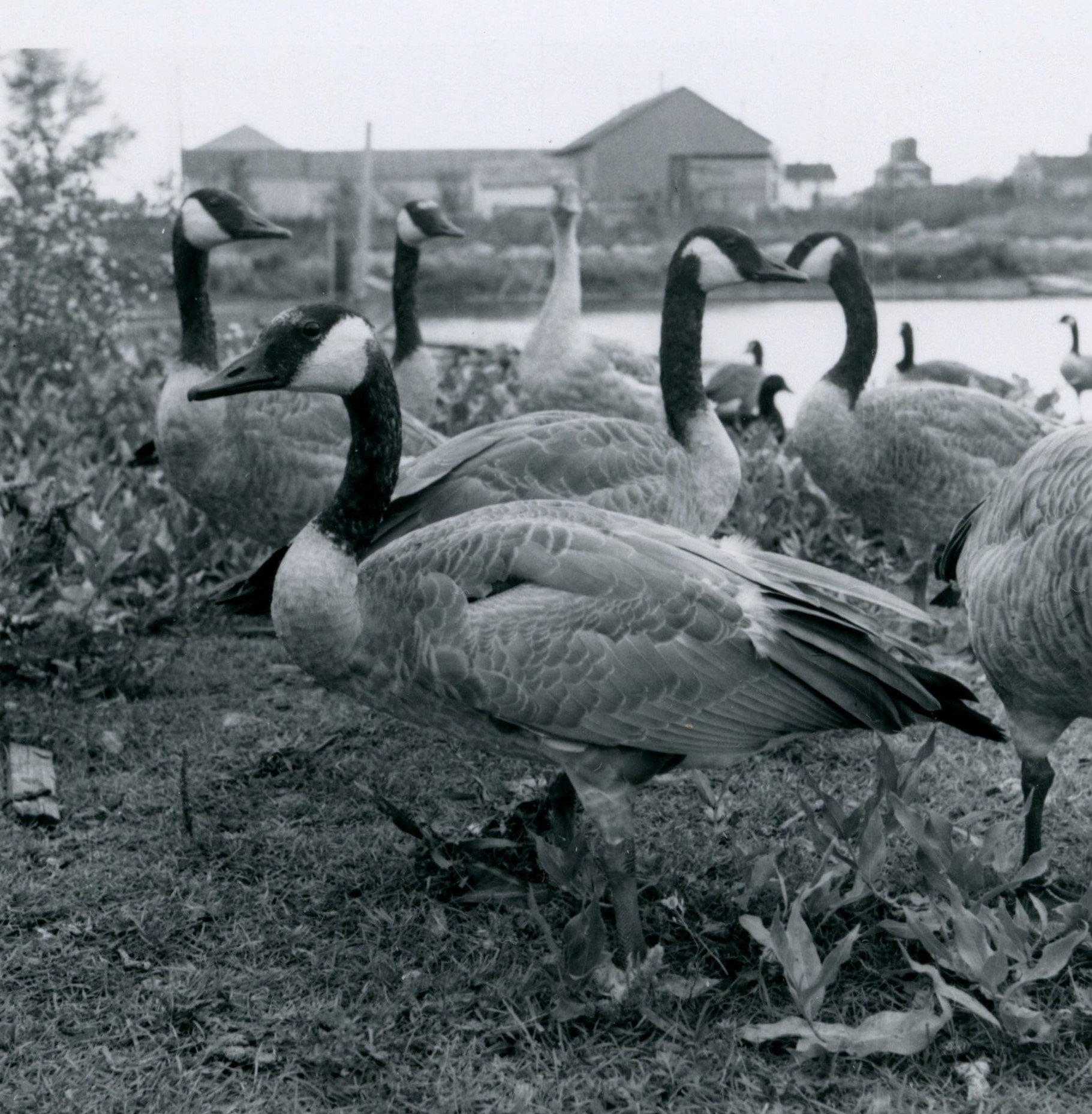Our City: Hiawatha, Queenie and Wascana Park’s Geese
It is hard to imagine the current prairie landscape without flocks of geese flying overhead or settled down in fields near marshes and sloughs. Regina’s Wascana Park boasts a large population of Canada Geese, with over 200 breeding pairs nesting there each year and as many as 7500 individual geese present there at certain times (Government of Canada).
Many would be surprised to find that the larger subspecies of Canada Goose that we are so familiar with would have once been a rare sight in Southern Saskatchewan. In the late 1940s, indiscriminate goose hunting combined with the drought of the previous decade had devastating effects on the Canada Goose population (Friends of Wascana Marsh).
In the late 1940s, Ralph Stueck, a naturalist from Abernethy, Saskatchewan, captured some injured Canada Geese after hunting season ended. He brought them back to his personal sanctuary, known as Sleepy Hollow, and restored them to health there. Stueck was an acquaintance of conservationist Fred Bard, who at the time was the director of the Saskatchewan Museum of Natural History in Regina. In 1953, Bard obtained a pair of geese from Sleepy Hollow and raised them on his property, adjacent to Wascana Park (Friends of Wascana Marsh).
This pair of geese are a bit of a Wascana Park legend. They were a mated pair, named Hiawatha and Queenie, who nested together until 1961. According to some accounts “Hiawatha was killed defending his nest, and Queenie passed on from unknown causes” (Free flight, 1986). The more romantic version of the story, which can be found on Wascana Centre’s website, reads:
“One summer morning, Hiawatha was found seriously injured and was taken into hospital care. When it became apparent he would not fully recover, Queenie was brought in to keep him company. Hiawatha died a month later. Queenie, who had been his mate for twenty years, found life unbearable without her mate and, it is said, soon after died of a broken heart. ”
The arrival of Hiawatha and Queenie kicked off a successful restoration of the Canada Goose population in southern Saskatchewan and beyond. In 1961, geese from Wascana were released in both Montmarte and Craven, Saskatchewan. In subsequent years, Wascana Park geese have been shipped as far as Quebec, British Columbia, Florida and New Mexico (Friends of Wascana Marsh).
Fred Bard can also be credited with establishing the Wascana Lake Migratory Bird Sanctuary in Wascana Centre in 1956. The sanctuary is not only home to the reestablished goose population, but also over 100 species of other migratory birds (Government of Canada). Lorne Scott characterized Wascana Park and the Wascana Lake Migratory Bird Sanctuary as “a sanctuary within a city”. The geese in Wascana Park are often considered to be a mess and a nuisance, but they represent an important part of Regina’s conservation history, and the international impact of Wascana Park’s bird sanctuary.
It is important to view conservation and preservation projects within the context of Saskatchewan’s settler colonial history. Most historical conservation projects would never have been necessary without settler’s environmental destruction and displacement of Indigenous peoples from their traditional territories.
Free flight. July 5, 1986 (page 16 of 68). (1986/07/05/, 1986 Jul 05). The Leader Post (1930-) Retrieved from https://login.libproxy.uregina.ca:8443/login?url=https://www.proquest.com/newspapers/july-5-1986-page-16-68/docview/2214172129/se-2
Friends of Wascana Marsh. Canada Geese. History.
https://www.wascanamarsh.ca/about-us/history
Government of Canada. Wascana Migratory Bird Sanctuary.
https://www.canada.ca/en/environment-climate-change/services/migratory-bird-sanctuaries/locations/wascana-lake.html
Wascana Centre. Walk 6 - A place for recreation. Things to see and do.
https://wascana.ca/things-to-see-and-do/tours-and-rentals/self-guided-tours/walk-6




